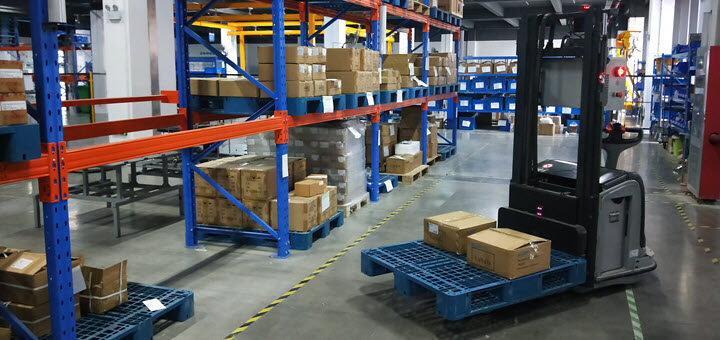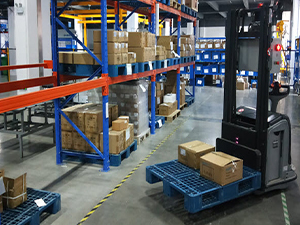3 Changes in Material Handling Driving Adoption of AGV Systems

Automated Guided Vehicles (AGVs) are more popular today than ever before. While AGVs provide countless advantages and reduce operating costs, there are changes happening in the world of materials handling that also drive the adoption of AGV systems.
1) Labor costs are rising
It’s no secret that the minimum wage is under pressure to increase at both the federal and state levels: In the last year alone, Arizona, Colorado, and Maine have decided to increase their minimum wages to $12 an hour by 2020, New York City is aiming to increase its minimum wage to $15 by 2018, and California plans to follow suit by 2022. Even congress is expected to feel the pressure to raise the federal minimum wage at some point during the next few years.
Download our Guide to Autonomous Mobile Robots (AMRs)
Regardless of whether or not this will ultimately hinder or help the economy, one thing is clear: As the federal and state minimum wages increase, the impact will be felt by employers in both distribution and manufacturing operations. As the minimum wage increases, the cost of skilled labor must also increase to meet the demands of a workforce expecting more in exchange for their skills.
Many operations see the switch to AGVs as a logical—and cheaper—solution to battle rising employment costs, especially those associated with forklift operators, who can be some of the most skilled and costly positions in these facilities.
2) AGVs are becoming cheaper to create and integrate
 In the past decade, the costs to create and integrate AGV systems have come down substantially, allowing small and midsize companies to purchase equipment that had previously been available only to larger operations with greater budgets.
In the past decade, the costs to create and integrate AGV systems have come down substantially, allowing small and midsize companies to purchase equipment that had previously been available only to larger operations with greater budgets.
In addition to reduced costs, advances in AGV technology now allow the vehicles to be integrated into systems that are only partially automated, allowing for a modular approach to automation. Instead of transitioning to a fully-automated operation, smaller companies can purchase AGVs piecemeal and transition slowly to full automation. Even if they do not proceed to full automation, they can benefit by using automated guided vehicles for repeatable tasks, such as the transport of materials from receiving areas to stock areas or manufacturing areas.
Other improvements in software and AGV systems has also made it possible to implement more efficient systems in some instances, which require fewer vehicles than systems from a decade ago. Intelligence allows for predictive positioning based on visualization and monitoring software, which allows vehicles to be prepositioned or routed in advance of being required. This reduces the wait time required for a vehicle to make a pickup or drop off and can lower the number of vehicles needed to support a facility.
3) Operations are increasingly flexible
To stay relevant and competitive in today’s market, factories and plants of all sorts are increasingly reliant on flexibility: They must change processes, products, and workflows quickly to keep up with the shifting demands of the market.
AGV use allows for rapid change to plant layout and operations through a simple reprogramming of routes and tasks. By comparison, fixed automation systems such as conveyors mounted along several hundred feet of travel path can take days, if not weeks, to reconfigure when necessary.
Reconfiguring conveyors can also sometimes mean completely shutting down production during transition, leading to downtime and lower revenue. Reconfiguring AGVs, on the other hand, often has a limited impact on the surrounding facilities, allowing production to continue during transition.
All of this points to AGVs as being the more flexible, productive option for facilities in today’s world, where terms like “responsive layout,” “agile workflow,” and “customization” are all seen as requirements to success.
The times, they are a changin’
As labor costs continue to rise, AGV production and implementation costs continue to fall, and the importance of a flexible workflow reaches an all-time high, it’s easy to see why companies large and small are beginning to make the switch to automation. This trend will only continue into the future as AGVs become the mainstream option for countless industries, from materials handling and manufacturing to automobile and healthcare.





